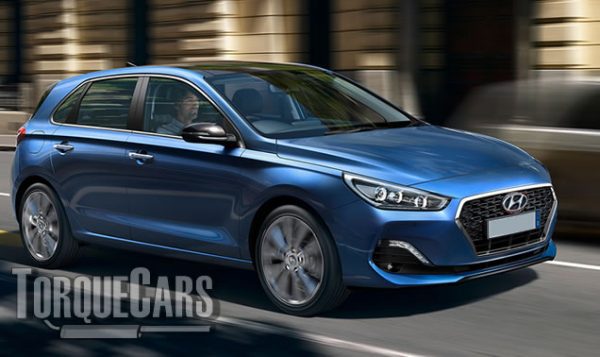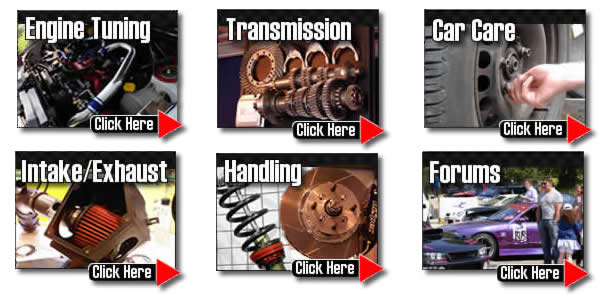Hyundai i30 Tuning
"Thank you for reading my i30 tuning guide."
Teh i30 is a very popular car which does much to reinforce the reputation of Hyundai for building fun to drive cars with high levels of equipment.
The i30 is popular with millennials, it is well equipped, nicely designed and engaging to drive with an excellent choice of engines.
The small body and great design make a good basis for a tuning project and we look at getting the best from your i30 by choosing the right mods and upgrades for it.
Handling and braking improvements alone do much for the i30 but throw in a few choice power mods to create the ultimate hot hatch or track day weapon.

The only thing holding you back in your i30 project is time, money and your imagination With the right mods your i30 can be transformed into a stunning project. Don't waste money, do your homework and follow our unbiased guides to each performance upgrade so you don't waste your money.

Handling/Suspension upgrades
Improving the handling for many tuners first priority in your i30 tuning project.
Fully adjustable suspension allows you to fine tune the handling of you i30 radically improving your drive.
We would go to a maximum drop of 22mm - 36 mm on most models. You risk rubbing on the arches if you go lower than this.
Top end power should be your overall aim on the i30 with a nice fat peak torque band.
The best power gains come from larger engine sizes. The more you start with the bigger the return on investment so engine swaps are good value mods for small engined cars.
Power mods for the i30 engines.
Typically these uprated mods are usually fitted by our members, decide how far you want to push your car before you get going.
- 1.4 L I4 109 PS (80 kW; 108 hp) at 6200 rpm
- 1.6 L I4 Gamma 126 PS (93 kW; 124 hp) at 6300 rpm
- 2.0 L I4 Beta II 145 PS (107 kW; 143 hp) at 6000 rpm
- 1.6 L I4 CRDi 90 PS (66 kW; 89 hp) at 4000 rpm
- 1.6 L I4 CRDi 116 PS (85 kW; 114 hp) at 4000 rpm
- 1.6 L I4 CRDi 128 PS (94 kW; 126 hp) at 4000 rpm
- .0 L I4 CRDi140 PS (103 kW; 138 hp) at 3800 rpm
Getting the best uprated upgrade kits for your planned usage of the car is vital. Stage 3 competition upgrades just don't work well on the road hard to control in slow traffic.
Please watch our introduction Video tutorial to car tuning. Be sure to subscribe and support our new channel.
How to tune your car
- Improve the handling
Focus on Suspension improvements, such as coilovers and make sure the bushings are in good order and that the alignment is correct. Then focus on improving the brakes, with a big disk brake conversion kit and fast road brake pads.
- Remove restrictions
Focus on the intake and exhaust with filters being the common point of restriction in a tuned car. Intercoolers may also become restrictive on turbo engines so this may also need to be uprated.
- Burn more fuel & air
Increase the fuelling so it matches the air coming into the engine. The ratio is important so you need to improve the fuel pump and injectors, so the head mods, big valve conversions, fast road camshafts and forced induction upgrades extra supply of air is adequately met.
- Test and replace any weak parts
Weak areas are commonly the clutch, the turbocharger and pistons and crankshaft in a highly tuned engine. Makes sure these components will cope with your power aspirations.
- The Tune or Remap
A cars ECU controls the fuel, timing, spark and even the turbo in some cases, so to fully extract your gains you should remap the car last and this will fully release the power. Some cars are easy to map, and others require piggyback ECU's or aftermarket ECU's but this is the most vital step of your tuning project.
Modifying to Stage 1:
Remap, Sports exhaust, Suspension upgrade (drop 30-40mm), Lighter flywheel, Alloy wheels, Panel air filter.
Modifying to Stage 2:
Fast road cam, high flow fuel injector, Ported and polished head, Power/Sport clutch, fuel pump upgrades.
Modifying to Stage 3:
Competition cam, Sports gearbox, Engine balancing, Adding or upgrading forced induction (turbo/supercharger), Internal engine upgrades (pistons/head/valves).
You should keep as much low end torque as possible and aim to achieve a long power band rather than a narrow top end power spike.
The point of our advice is to give a little insight into the world of customizing performance parts and point you in the right direction, our forum is the place to go for detailed advice and tips on your customized car project, the best sport upgrades and all aspects of modding cars.A fast road camshaft is widely accepted as one of the best NASP power modifications you can do with a single part fitted to your engine.
It improves the intake and exhaust flow and pushes up the power if done right. Ideally you'd add other mods and finish up with a performance chip.
TorqueCars would caution you not to go with a motor sport cam as this affects the engines idling and general town driving characteristics.You will need to ensure that the engine is not starved of fuel so will need to look at the fuelling.
If you find you get flat spots and power surges after your kits you should check the fuelling and try a higher octane fuel as well. To get sufficient fuel you may need to uprate the injectors on your engine. If you've uprated your fuelling with bigger injectors you will also need to get a bigger fuel pump to supply it.
Intake and Exhaust Tuning.
The next area for modification is the intake and exhaust. Please note that WE DO NOT RECOMMEND INDUCTION KITS, unless you have tuned your car extensively and are finding that the standard air intake has become a restriction.
For most i30 engines TorqueCars would suggest you just go with a washable panel air filter. On heavily tuned engines and turbo vehicles an induction kit will help release the power providing you address the problem of supplying cold air.
Sports exhausts generally help improve air flow through the engine but avoid an exhaust that is too large or you could will reduce the flow rate. Stick to 1.5 to 2.5 inches as a rule of thumb.
Airflow through the head can be dramatically increased with some professional gas flowing. These should match and be setup to take into account any other engine mods.
In nearly all cases of significant i30 tuning your clutch will start to slip and this should be improved - read our overview on clutches for more information.
Turbo engines are just pleading to be flashed or remapped. You will see significant power gains on most modern turbo engined cars including diesels making a remap one of the most cost effective and significant modifications for your money.
We've also seen some tuners toying with twincharging conversions and making some very high power figures.
The most phenomenal power gains for NASP engines usually involve the addition of forced induction. Turbos are often harder to add than a supercharger. With a turbo the power curve is related exponentially to the engine speed making it harder to map.
The nice steady boost and rpm characteristics of the supercharger make them simpler to map. Alternatively you could add water injection to reduce the risk of knock.
Alloy wheel upgrades.
The benefits of alloy wheels include lowering your unsprung weight and better brake cooling. It is worth noting that although they can look cool on the i30 large alloys will actually decrease your performance. The larger you go the lower your acceleration will be - this to the change in your effective final drive ratio.
Due to this fact we would advise sticking to a maximum wheel size of 16 inches, although we know some of our members have with bigger wheels with no problems.
For more information on Tuning your car please join us in our friendly forum where you can discuss i30 options in more detail with our i30 owners. It would also be worth reading our unbiased Hyundai tuning articles to get a full grasp of the benefits and drawbacks of each modification.
Please help us improve these tips by sending us your feedback in the comments box below. We love to hear what our visitors have got up to and which mods work best for them on each model of car. Comments are used to improve the accuracy of these articles which ar
If you liked this page please share it with your friends, drop a link to it in your favourite forum or use the bookmarking options to save it to your social media profile.
Check out TorqueCars new YouTube channel, and see their awesome new content...
Feedback
Please use our forums if you wish to ask a tuning question, and please note we do not sell parts or services, we are just an online magazine.
Help us improve, leave a suggestion or tip
